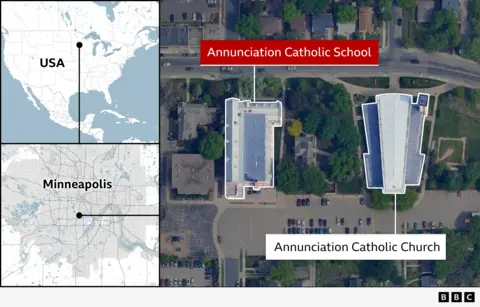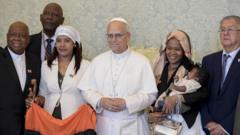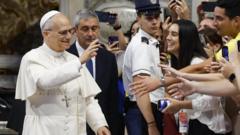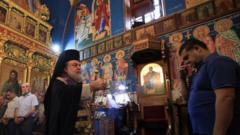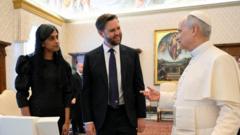In a significant moment for the Roman Catholic Church, Pope Leo XIV presided over his inaugural Mass on Sunday, tapping into a rich tradition that once included the ceremonial crowning of a pontiff with a majestic gold tiara. Until about 60 years ago, the papal coronation was an elaborate affair, marked by the grandeur of the tiara, which was typically worn at the beginning and end of solemn events. According to Rev. Stefano Sanchirico, co-author of a book on papal rituals, popes historically donned the tiara primarily for these ceremonial entrances and exits.
The last pope to wear this ornate crown was Paul VI, who abolished the tiara in 1964 in a move that symbolized a shift towards modernity within the Catholic Church. Paul VI chose instead to wear a miter, and this change has been upheld by his successors. The tiara itself can now be found in the Basilica of the National Shrine of the Immaculate Conception in Washington D.C., a testament to the Church's evolving legacy.
Reflections on papal tradition can be traced back as far as the 12th century. As noted by media historian Thomas B. Morgan in his 1937 book "A Reporter at the Papal Court," the coronation of Pope Pius XI in 1922 was celebrated as "more dazzling and colorful" than the coronation of the British monarch. Archival footage from past ceremonies vividly captures the spectacle of these events, such as the 1939 coronation of Pope Pius XII and the crowning of Pope John XXIII in 1958—now nostalgic reminders of an era that emphasized the pope’s temporal power.
In his inaugural address on October 22, 1978, Pope John Paul II emphasized that the focus of the papacy should transcend ceremonial grandeur. “This is not the time to return to a ceremony and an object considered, wrongly, to be a symbol of the temporal power of the Popes,” he stated, indicating a shift toward a more spiritual and less regal interpretation of the papacy.
Paul VI’s reforms did not stop at the tiara; the papal inauguration was also shifted outdoors, allowing for greater congregational participation. This change marked an effort to bridge the traditions of the Church with contemporary society, exemplifying the Vatican's ongoing journey of modernization.
As Pope Leo XIV assumes his role, the Church continues to grapple with the balance of tradition and modernity in a rapidly changing world. While the tiara itself may belong to history, its legacy persists, influencing the papacy's path forward.
Elisabetta Povoledo is a seasoned journalist based in Rome, focusing on Italy and the Vatican, with over three decades of reporting experience.
The last pope to wear this ornate crown was Paul VI, who abolished the tiara in 1964 in a move that symbolized a shift towards modernity within the Catholic Church. Paul VI chose instead to wear a miter, and this change has been upheld by his successors. The tiara itself can now be found in the Basilica of the National Shrine of the Immaculate Conception in Washington D.C., a testament to the Church's evolving legacy.
Reflections on papal tradition can be traced back as far as the 12th century. As noted by media historian Thomas B. Morgan in his 1937 book "A Reporter at the Papal Court," the coronation of Pope Pius XI in 1922 was celebrated as "more dazzling and colorful" than the coronation of the British monarch. Archival footage from past ceremonies vividly captures the spectacle of these events, such as the 1939 coronation of Pope Pius XII and the crowning of Pope John XXIII in 1958—now nostalgic reminders of an era that emphasized the pope’s temporal power.
In his inaugural address on October 22, 1978, Pope John Paul II emphasized that the focus of the papacy should transcend ceremonial grandeur. “This is not the time to return to a ceremony and an object considered, wrongly, to be a symbol of the temporal power of the Popes,” he stated, indicating a shift toward a more spiritual and less regal interpretation of the papacy.
Paul VI’s reforms did not stop at the tiara; the papal inauguration was also shifted outdoors, allowing for greater congregational participation. This change marked an effort to bridge the traditions of the Church with contemporary society, exemplifying the Vatican's ongoing journey of modernization.
As Pope Leo XIV assumes his role, the Church continues to grapple with the balance of tradition and modernity in a rapidly changing world. While the tiara itself may belong to history, its legacy persists, influencing the papacy's path forward.
Elisabetta Povoledo is a seasoned journalist based in Rome, focusing on Italy and the Vatican, with over three decades of reporting experience.


